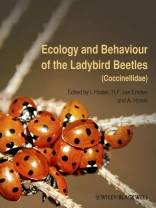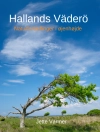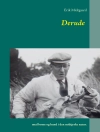Ladybirds are probably the best known predators of aphids and coccids in the world, though this greatly underestimates the diversity of their biology. Maximising their impact on their prey is an important element in modern conservation biological control of indigenous natural enemies in contrast to the classical approach of releasing alien species.
Ivo Hodek is one of the most internationally respected experts on coccinellids who has researched these insects for his entire career. He has now brought together 14 scientists of international standing to author 12 chapters, making this book the definitive treatment of coccinellid biology and ecology.
This volume covers the rapid scientific developments of recent years in the understanding of coccinellid phylogeny, the semiochemicals influencing their behaviour and of molecular genetics. Recent insights in relation to intraguild predation and the assessment of the predatory impact of coccinellids are also covered.
Other special features of the volume are the extensive references covering the literature from both East and West and a taxonomic glossary of the up-to-date nomenclature for species of coccinellids as well as of other organisms mentioned in the text.
While aimed at researchers, university teachers and agricultural entomologists, the book is readable and appropriate for others who just have a liking for these interesting and attractive insects.
Inhoudsopgave
Detailed contents, ix
Contributors, xvii
Preface, xviii
Introduction, xix
Taxonomic glossary, xx
1. PHYLOGENY AND CLASSIFICATION, 1
Oldrich Nedve¡d and Ivo Kovár¡
2. GENETIC STUDIES, 13
John J. Sloggett and Alois Hone¡k
3. LIFE HISTORY AND DEVELOPMENT, 54
Oldrich Nedve¡d and Alois Hone¡k
4. DISTRIBUTION AND HABITATS, 110
Alois Hone¡k
5. FOOD RELATIONSHIPS, 141
Ivo Hodek and Edward W. Evans
6. DIAPAUSE/DORMANCY, 275
Ivo Hodek
7. INTRAGUILD INTERACTIONS, 343
Éric Lucas
8. NATURAL ENEMIES OF LADYBIRD BEETLES, 375
Piotr Ceryngier, Helen E. Roy and Remy L. Poland
9. COCCINELLIDS AND SEMIOCHEMICALS, 444
Jan Pettersson
10. QUANTIFYING THE IMPACT OF COCCINELLIDS ON THEIR PREY,
465
J. P. Michaud and James D. Harwood
11. COCCINELLIDS IN BIOLOGICAL CONTROL, 488
J. P. Michaud
12. RECENT PROGRESS AND POSSIBLE FUTURE TRENDS IN THE STUDY OF
COCCINELLIDAE, 520
Helmut F. van Emden and Ivo Hodek
Appendix: List of Genera in Tribes and Subfamilies, 526
Oldrich Nedve¡d and Ivo Kovár¡
Subject index, 532
Colour plate pages fall between pp. 250 and pp. 251
Over de auteur
Ivo Hodek has worked on Coccinellidae for over 50 years with
most of his career spent at the Institute of Entomology, Biology
Centre, Czech Academy of Sciences. Here he was Head of the
Ecophysiology Laboratory (1990-1998), and now holds an Emeritus
Scientist position there. He has also researched and taught in The
Netherlands, France and Japan. He was awarded the J.E. Purkinje
Medal of the Czech Academy of Sciences in 2000. In 1965, he founded
the ‘Ecology of Aphidophaga’ series of symposia, and since 1985 has
been the Editor of the European Journal of Entomology.
Alois Honek has taught insect ecology since 1972, and
since 1972 has been Senior Research Scientist, Crop Research
Institute, Prague-Ruzyne, specializing in invertebrate and plant
ecology with many research studies on Coccinellidae. He has also
had periods of research in Russia and France.
After a period of research at Imperial College, London,
Helmut van Emden was appointed to the Department of
Horticulture at Reading University where he was appointed Professor
in 1976 and Head of the Department from 1986-1999. He is currently
Emeritus Professor in the School of Biological Sciences. His
research has focused on aphids, particularly host plant resistance
and biological control. He has conducted several research projects
in the tropics and has held visiting appointments at the
Universities of California and Queensland. He received the Karl
Escherisch Medal of the German General and Applied Entomological
Society in 1993.












